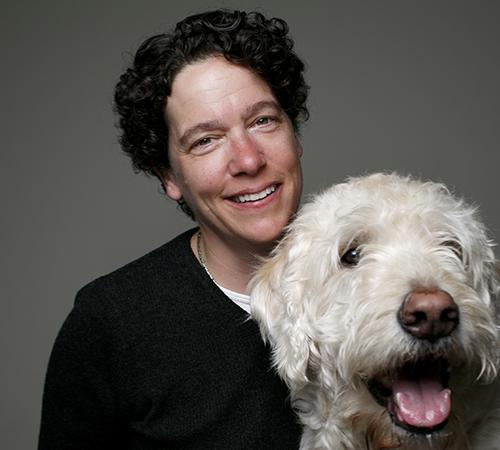 Beth is a photographer who became a computer expert during the early days of digital photography. She has worked at Harvard for more than 30 years, wearing many different hats. Beth transitioned from the HMS IT Client Services Group to HMS IT Research Computing. A key part of her job is advising scientists about communicating with visual data.
Beth is a photographer who became a computer expert during the early days of digital photography. She has worked at Harvard for more than 30 years, wearing many different hats. Beth transitioned from the HMS IT Client Services Group to HMS IT Research Computing. A key part of her job is advising scientists about communicating with visual data.
What are the best and worst parts of your work?
Worst part of my job is not an issue, recently: it was the commute. I used to bike to work, but when my dog got a job at Children’s Hospital, I had to start driving. I couldn’t get him to sit still in my handlebar basket, and it was tough to see the road beyond his anvil-sized head. Even though it is a mere six miles, the ride was awful!
The best part of the job is everything else. As a socially skilled introvert, I can say that I take much delight in most everyone I’ve met. The brilliance, kindness, inquisitiveness, humor, and even humility of nearly everyone at HMS inspires me. I like the small town feel of the LMA. I get my bagels from Ever; Lisa deposits my checks at the credit union; Simon reminds me where I parked in the garage; I volunteer next door at Children’s; we take strolls in the urban wilds of the Emerald Necklace; we grab a beer at the Pig. It’s a great community to be a part of.
What drew you to research computing?
I got my first camera on July 20, 1969. I was hired at HMS on July 20, 1987. I’ve always been framing my world through a view finder, even before my first camera, a Kodak Instamatic 124. After working as a radio disc jockey and then a special event electrician, I was hired at HMS as a photographer and media specialist.
For the first few years at HMS, we exclusively shot to this stuff called “film.” My space over in TMEC at one time was the morgue, but it had been renovated the year I arrived to include three darkrooms and a very large photo studio (it was meant to be a video studio, but the ventilation was a noisy racket that couldn’t be mitigated). Besides providing presentation equipment to instructors teaching medical students, I photographed flat art for those instructors to use in 35mm slide projectors. I shot tons of events and lots of portraits. I also did plenty of my own personal photo studio work and darkroom printing after hours. It was hard to forget, during many solo hours printing and hearing strange noises, that the space had been a morgue. At 2 a.m., things did get a little spooky.
By 1990, digital cameras were starting to emerge as a viable option for professional photographers. The early days of digital photography were challenging, ultimately leading me to become a skilled computer user: those first personal computers didn’t play nicely with peripheral devices like scanners, cameras, or even external storage. I’m guessing that I spent as much time troubleshooting my computer and its long chain of plugged in devices as I did producing actual images.
So, your passion for photography led you to computers?
Yes. I left the Program of Medical Education, where I did the photography job, in 2000 and became an imaging specialist within the nascent Research Computing group in IT, helping researchers work with their images to communicate their science. I develop efficient strategies for scientists to get the job done by writing guides, creating seminars, and consulting. I also do freelance scientific and engineering illustration. With the collapse of the global economy in 2008, and with my job in the crosshairs, I broadened my job skills to include desktop computer troubleshooting (after all, I’d been breaking computers at HMS for 18 years!).
What brings you joy?
I get a tremendous amount of satisfaction with the work I do within the Harvard Union of Clerical and Technical Workers (HUCTW). I am a local union representative and I am also a member of the union’s executive board. Back when I was shooting film for HMS, there wasn’t a union, so it’s rewarding to see the work that went into building an organization that didn’t even exist, into a vital part of the Harvard community. I love seeing how the work that the union has done over the years has translated into a better place to work for everyone, regardless of membership. I hope that I can be a productive resource for the HMS community to come to with any concerns about the work that they do here.
When I’m not volunteering, I spend a lot of time in nature, wandering around (yes, with a camera). These days I’ve retired from professional photo work, and just shoot for myself. I’ve also stopped my studio work and taken up a more spontaneous and abstract approach to image-making, which is liberating!